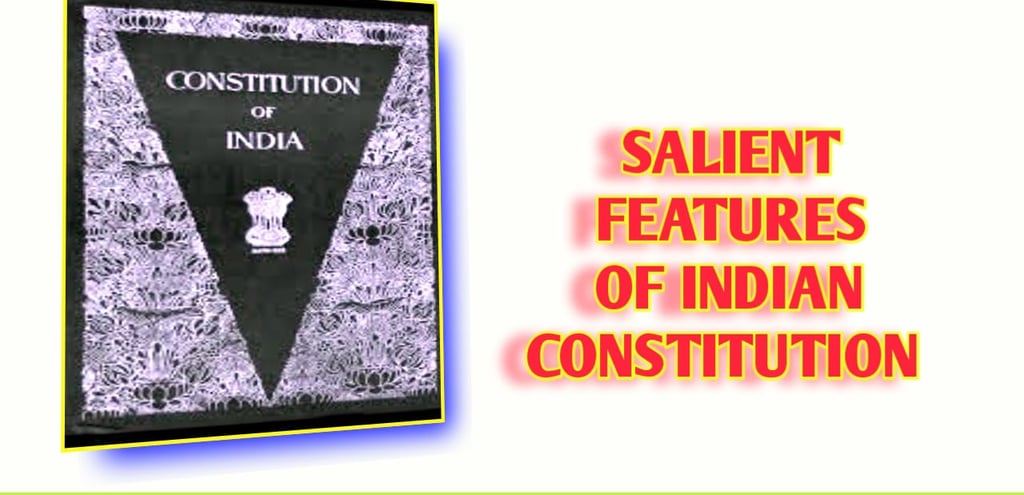Salient Features of Indian Constitution
These salient features have contributed to India's democratic journey and have shaped its socio-political landscape. The Constitution continues to be a living document, evolving with the changing times while preserving its core values
HOT TOPICS
12/7/20242 min read
Indian Constitution : Salient Features


The Indian Constitution, drafted by a Constituent Assembly and adopted on November 26, 1949, is a remarkable document reflecting a diverse nation's aspirations and values. It is the longest written constitution in the world, drawing inspiration from various sources, including the Government of India Act 1935, the British Constitution, the US Constitution, the Irish Constitution, the Canadian Constitution, the Australian Constitution, the Weimar Constitution of Germany, the Soviet Constitution, the French Constitution, the South African Constitution, and the Japanese Constitution.
Salient Features of the Indian Constitution:
Lengthiest Written Constitution: The Indian Constitution is the longest written constitution in the world, containing over 450 articles and 12 schedules. Its length reflects the complexities of governing a diverse nation with a vast population.
Parliamentary Form of Government: India adopted the British parliamentary system, characterized by a bicameral legislature (Parliament), a cabinet headed by a Prime Minister, and a ceremonial head of state (President).
Unique Blend of Rigidity and Flexibility: The Constitution balances rigidity and flexibility. While certain provisions require a special majority for amendment, others can be amended through a simple majority. This ensures both stability and adaptability.
Federal System with Unitary Bias: India has a federal system with a strong central government. The Constitution divides powers between the central government and the state governments, with the central government having significant powers.
Fundamental Rights: Part III of the Constitution guarantees fundamental rights to all citizens, including the right to equality, freedom of speech and expression, freedom of religion, and the right to life and personal liberty. These rights are enforceable by the courts and can be suspended under certain circumstances.
Directive Principles of State Policy: Part IV of the Constitution outlines the Directive Principles of State Policy, which are guidelines for the state to follow in formulating policies. These principles aim to promote social and economic justice, including the right to work, education, and a decent standard of living.
Fundamental Duties: Part IV-A of the Constitution lists Fundamental Duties, which are moral obligations on every citizen. These duties include respecting the national anthem, safeguarding public property, and promoting harmony among different sections of society.
Secular State: India is a secular state, ensuring equal treatment for all religions and preventing state interference in religious matters.
Universal Adult Franchise: The Constitution grants the right to vote to all citizens aged 18 and above, regardless of caste, creed, religion, or gender.
Single Citizenship: India has a single citizenship, meaning that every citizen is a citizen of India and not of any particular state.
Independent Judiciary: The Constitution establishes an independent judiciary, with the Supreme Court at the apex. The judiciary has the power of judicial review, enabling it to strike down laws that are inconsistent with the Constitution.
Separation of Powers: The Constitution establishes a system of separation of powers between the legislature, the executive, and the judiciary, ensuring a system of checks and balances.
Emergency Provisions: The Constitution provides for emergency provisions that allow the central government to assume extraordinary powers during times of national emergency.
Three-Tier Government: India has a three-tier system of government, comprising the central government, state governments, and local self-government. This ensures democratic governance at all levels.
Co-operative Societies: The Constitution recognizes the importance of co-operative societies and provides for their promotion.
These salient features have contributed to India's democratic journey and have shaped its socio-political landscape. The Constitution continues to be a living document, evolving with the changing times while preserving its core values
